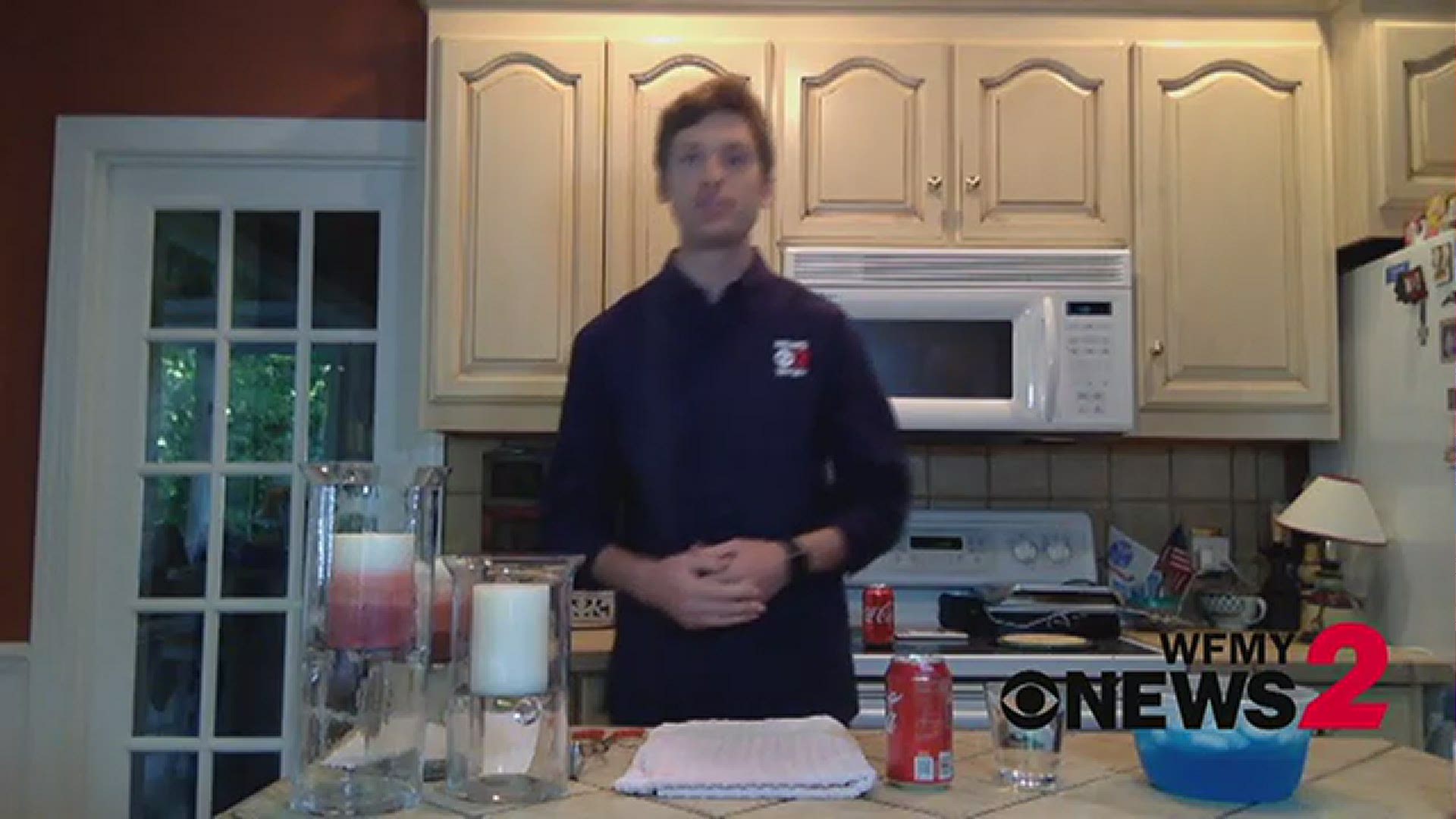GREENSBORO, N.C. — Welcome back to News 2 Science Geeks! It's a new weekly segment that gives you some easy-to-do science experiments during this period of staying at home. Have fun, and let us know if you try this one out. This week we're going to crush a soda can with only...air!
WHAT YOU'LL NEED:
- A bowl of cold ice water
- A glass of tap water
- One soda can
- Pair of tongs
FOLLOW THESE STEPS:
- Fill empty soda can with a couple tablespoons of water
- Clean off any extra water on the top of the can
- (Requires help from parent or guardian) Place soda can on a stovetop burner on medium-high heat
- Wait until the water in the can starts to boil and a steady stream of water vapor is coming out of the top of the can (but make sure you don't burn it all out or the bottom of the can will burn)
- (Requires help from parent or guardian) Using the tongs, get a good grip on the can without creasing the sides, quickly turn the can over and dunk the top into the bowl of cold water.
- WATCH THE CAN IMPLODE BEFORE YOUR EYES!
TIP: Make sure not to let all of the water drain out of the can. This is why pulling the can off the stove and dunking the top in the cold water needs to happen pretty quickly
WHY DID IT WORK?
We created low pressure in the can.
Cold air is much denser than warm air. But, why does that matter here?
When we heated the water, it turned from a liquid state into a gas state (Water vapor). The molecules in the can were moving around very fast, pushing on the walls on the soda can, creating high pressure. When we quickly changed that temperature by dunking the can in the water, the water vapor condensed back into water and all of those molecules came together quickly, crushing the can.
What happens similar to this in weather? Meteorologists talk about high pressure and low pressure a lot when forecasting the weather, and those pressure systems help make up our different weather sysytems.
In high pressure, air moves away from the center of circulation, also called divergence. In low-pressure systems, air at the surface comes together, called convergence, and then rises. As air rises it cools and condenses to form clouds. That's why we tend to associate cloudy, rainy days with low pressure and nice, sunny days with high pressure.
You might've noticed that some of the water from the bowl actually ran out of the can when we pulled it back up. When we created that low-pressure system the water in the bowl actually got pushed up into the can, similar to a vacuum.
Try it at home! Have fun, and be safe!

